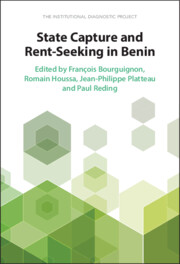Why has Benin been chosen, after Tanzania, as the second in-depth case study of the relationship between the quality of institutions and development? The first reason is the need to diversify the features of the economies to be studied. Diversity here is first geographical and historical. Tanzania is an East African country with a British colonial past. Benin is a West African country with a French colonial history. But diversity is also about economic endowments. Tanzania is a rather diversified economy, with both mineral and agricultural exports. Benin is officially a mono-agricultural export country, with cotton as its main resource. On top of this, Benin exploits its lengthy common border with Nigeria for profitable illegal cross-border trade, thus partly sharing the oil rent of its neighbour. Benin is thus much closer to the many resource-rich sub-Saharan countries than to Tanzania. Another key difference lies in the size of the two countries. Tanzania’s population is approximately five times larger than that of Benin, which is more representative of the many ‘small’ sub-Saharan countries. It is well known that the development context of a country greatly depends on its size. Finally, it turns out that both countries were roughly at the same level of development, when measured by gross domestic product (GDP) per capita, in the early 1990s. Almost thirty years later, Benin lags behind Tanzania by some 25 percentage points in GDP per capita terms. Both countries thus also differ in their long-run growth performance.
But there are also some features that are common to Benin and Tanzania, which as a matter of fact they share with several sub-Saharan African countries. They both went through a socialist episode after, or not long after, independence: the Ujamaa era launched by Nyerere in Tanzania and the Marxist–Leninist regime imposed under Kérékou’s dictatorship in Benin. In both cases, the liberalisation and the transition to a market economy took place in the early 1990s, very much under the pressure of donors. Yet, their trajectories have been quite different since then. If both countries behave according to democratic rules and are often praised for this, their political landscape is different and the relationship between politics and the economy takes very different forms today.
The comparability or diversity of the two countries will matter at the final stage of the Economic Development and Institutions (EDI) institutional diagnostic project, when lessons from the various case studies will be put together. The present volume focuses exclusively on Benin and essentially tries to identify the institutional weaknesses, together with the political economy factors, that have prevented the country’s GDP per capita from growing faster than 1.2 per cent on average over the last twenty-five years, that have prevented a fall in its poverty rate, and that have prevented a reduction in its dependency on foreign official resources – and all of this behind a peaceful democratic façade that has been praised by donors.
To begin with the Benin study, an exploratory mission was carried out in Cotonou in May 2016, with the aim of identifying a preliminary list of institutional weaknesses Benin is facing. Thereafter, an engagement workshop was held in Cotonou in August 2017. The workshop gathered participants from a wide range of backgrounds who later played key roles in the project either as chapter authors for the volume, as resource persons for providing various advice, or as key informants in the institutional surveys. The surveys were implemented from December 2017 to February 2018. A thematic chapter kick-off workshop was held in Brussels in September 2018. Thereafter, a workshop on the first draft of the whole case study took place in Grand Popo in March 2019, and a complete first version of this volume was posted on the EDI website in August 2019 (https://edi.opml.co.uk/research/benin-institutional-diagnostic). Finally, a dissemination workshop, with participants and contributors from other countries in West Africa, was held in Cotonou in January 2020.
Warning
This study was developed in a context in which Benin has been experiencing several institutional changes since President Talon was elected in 2016 and re-elected for a second term in 2021. Moreover, the COVID-19 pandemic has severely impacted Benin since 2020. We were not able to systematically study the 2016–2022 period due to the evolving nature of the institutional changes that have been occurring in Benin since 2016, but also due to the lack of consistent and systematic data for that period. It is nonetheless natural to ask whether the main conclusions of the diagnostics presented in this volume are still valid today. At the end of the book we revisit a number of critical issues that were identified in our analysis (see Afterword).

